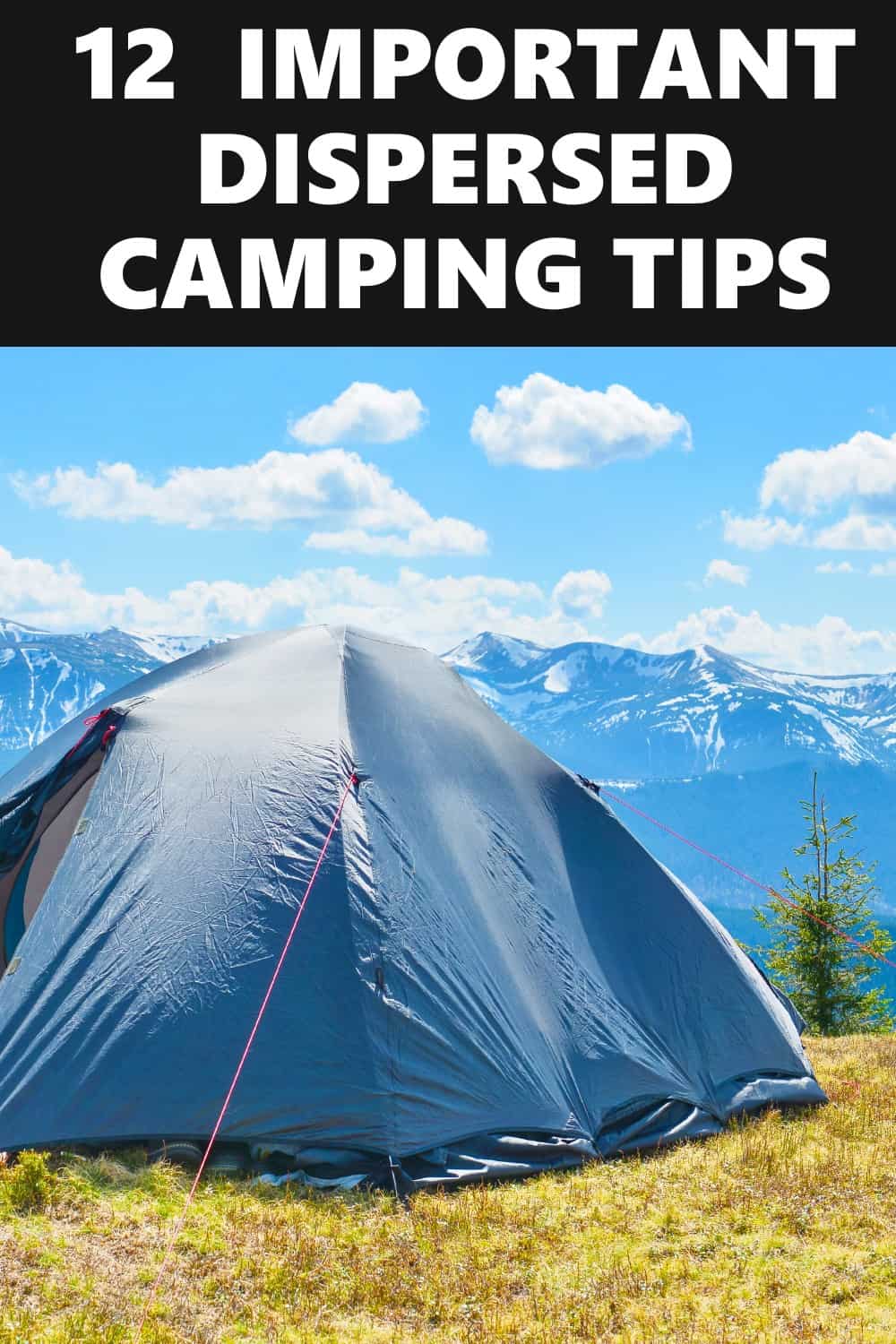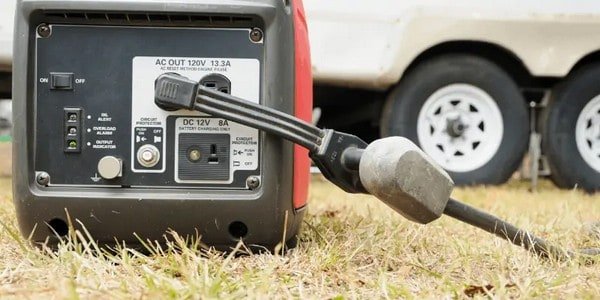There is nothing that can beat the exhilaration of turning down an unmarked dirt road and locating a picturesque location to camp in far from the city – our definition of the boondocking lifestyle.
Because of this, most people love to boondock. If you are looking into boondocking, mastering the art of a boondocking lifestyle is vital. In addition to that, understanding the boondocking lifestyle will not only make your boondocking experience fun but also safe.
If you what to understand the boondocking lifestyle better, then you are in the right place. This article will be taking you through the top ten tips for beginners to help explain the boondocking lifestyle.
Want more ideas to round-out your Boondocking and Camping Knowledge?
A lot of great ideas are in these posts!
- 5 Top Boondocking vs Dispersed Camping Choices
- 14 Top Must Know Boondocking Tips For Beginners
- What is Dispersed Camping and can Anyone Do It?
- 8 Tips to Free Boondocking and Free Camping
- How to Stay Safe and Secure Boondocking
Boondocking Lifestyle – 10 Easy Beginner Tips
When it comes to boondocking, the main thing to focus on is your personal and family safety. For your trip to be successful, safety needs to be your top priority. Here are some vital tips you need to factor in for a successful boondocking experience.
1. Prepare and Plan Ahead
In boondocking, safety often starts before leaving your current spot. Some individuals love to wing it or drive until they find a spot that will best suit their needs.
However, it is highly recommended that you plan for your travel and do some research on potential camping sites within your destination.
Moreover, it is ideal that you read some reviews for the site you intend to use as a destination. If an individual has experienced a problem with security or even break-ins, it is best that you avoid that particular area.
One thing we do however, is to read as many reviews as we can find. There is always going to be someone who was unhappy with the conditions. If all the other reviews are great, you can still try the area.
You might consider using Google maps for more information on the locations you are scouting, for other possibilities as well, especially if it ends up being full when you arrive. By planning, you are guaranteed a great experience.
2. Choosing a Boondocking Location
A Boondocking lifestyle involves choosing a boondocking location that will best suit your needs. However, boondocking is never that simple as compared to other forms of camping.
This is because there are various restrictions and the regulations that are in place that often prevent campers from just parking their RVs anywhere and start camping. Fortunately, there is plenty of land at your disposal.
You will find plenty of public lands that are available for boondocking. These lands are often managed by various public agencies. These agencies include BLM (Bureau of Land Management), Fish and Wildlife Service, and Forest Service.
If you are not sure where to start, there are various resources to check out, from apps to websites. You might consider checking out apps such as Campendium. They allow campers to write reviews for every site they have been to.
Such reviews are essential since they entail vital information such as road condition, nearby amenities, and cell reception, among others.
You might also consider checking out websites such as freecampsite.com and other apps like AllStays and iOverlander. They are equipped with the same features as Campendium.
Each of these apps and website offers an advanced search allowing you to locate exactly the boondocking site that will best suit your needs.
3. Always Conserve Water
A Boondocking lifestyle involves conserving as much water as possible. Water conservation is one of the most important rules for a happy and extended period for boondocking.
When you run out of water, you will be forced to go back to civilization within a short period of time. It is also highly recommended that you start heading out before your tank runs dry.
When it comes to boondocking, every drop of fresh water is precious. This means that you need to be serious when conserving it. One of the most vital tips when boondocking is carrying an extra amount of drinking water.
This means that you will not have to depend solely on your build-in potable water tank. To do this, you should consider purchasing collapsible water containers or buying several 3 or 5 gallon water bottles.
You will not only need water for drinking, there are various chores that require water from cooking to cleaning and flushing your toilet. As a result, you will need to come up with ways in which you can save water while on the road.
One of the ways in which you can achieve this is by investing in disposable dish wares such as plastic cutlery and paper plates. Another thought is to save your used dish water and use that for flushing the toilet.
4. Take Care of Your Trash
One rule of boondocking is to leave the campsite a bit cleaner than you found it. You should always take care of your trash to avoid a negative impact on the environment.
While in the wilderness, you will not have a place to take your trash, and dumping it in the public ground is unacceptable. This means that while boondocking, you will be forced to share space with your trash.
Depending on the area where you are boondocking, your trash can become a safety hazard. For instance, when camping in an area with scavengers, you will not be able to leave your kitchen garbage outside.
5. Set Up In A Way That Is Easy To Leave
Once you settle-in for the evening, you should consider setting up your belonging in a way that is relatively easy to leave. Boondocking lifestyle involves having a backup plans. You could be forced to move quickly if you accidently camped on private land.
Most individuals that have boondocked before have had to move occasionally during the night. Therefore, having a second location for boondocking is imperative.
If you encounter a safety problem, such as fires, flooding, or wild animals, you should consider having the number for local emergency services. Consider storing it in your phone or have it written somewhere, ensuring that it is accessible.
While boondocking, it is highly recommended that you limit alcohol consumption, especially if you are the driver. This is vital since you might not know when you will be forced to drive while boondocking.

check out our video
6. Sufficient and Reliable Source of Power
Boondocking lifestyle involves having a reliable and sufficient source of power. There is no doubt that power is the trickiest part of boondocking. You will have to ensure that your RV is fitted with sufficient batteries.
Fortunately, most RVs are equipped with these. However, some tend to be less potent for use for an extended period. Therefore, you should consider investing in powerful batteries capable of holding power for a more extended period.
Once you have your RV equipped with reliable batteries, you will need to look for ways in which you will charge your batteries so that you can easily power your devices as well as turn on lights when needed.
If you have planned on boondocking off-grid for an extended period, you should consider installing solar panels along with a powerful and reliable inverter on your RV. You might consider using generators when it comes to charging your batteries.
It is relatively cheaper as well as less permanent compared to installed solar panels. We have purchased a reliable inverter with solar panels that you set up on the ground. This is what we use to handle all our equipment recharging.
7. Master Basic Driving Safeties
Since you will be living in your RV in the wilderness, it is highly recommended that you practice and master some basic driving safeties. You should consider having all the essential tools that will help in fixing your car in case of a breakdown.
Some vital tools such as TPMS or the Tire Pressure Monitoring System equipped with a sensor is ideal for tracking your tires. TPMS will warn you in case your tire decreases or increases past safe predetermined measures.
Safety is of essence while boondocking off-grid. As a result, you need to factor in all vital measures that will help in boosting your safety during your stay. And the functionality of your RV isn’t excluded.
It would be best if you equipped yourself with the necessary tools that will ensure your RV is in an excellent state in case of an emergency situation. This is one of the important factors of a boondocking lifestyle.
8. Gray and Black Water Tanks
When it comes to boondocking lifestyle, you will want to know and understand what gray and black water tanks are. Usually, water, along with wastewater disposal, is a factor that needs to be considered when unplugging.
While boondocking in the wilderness, you should consider showing up to the site with an empty tank, giving you sufficient space to use during your stay. One needs to be conservative with water usage, if so, your tanks will not fill up too fast.
Whenever you leave the boondocking site, you should consider looking for a place to empty your tank. If you are heading to a campground with facilities, you could consider emptying it there.
However, if you are heading to a different boondocking site or going back home, you should look for a place along the way to empty your tank.
You will find a dumping station in areas that offer potable water. These include gas stations, travel centers, state parks, rest areas, and major campgrounds. There are apps and websites such as Sanidumps that offer ample resources for locating dump stations.
9. Staying Connected
If you are planning on boondocking with tech-friendly individuals, the thought of camping in the middle of nowhere sounds like a scary adventure for some. This is because of cell reception and internet access.
Fortunately, boondocking in the middle of nowhere doesn’t mean that you cannot have internet access. You can still have some strong Wi-Fi connections when boondocking in the wilderness.
Boondocking lifestyle nowadays consists of stable internet access. There are areas with excellent phone reception, allowing you to use your phone for your everyday interactions.
If you work while on the road, you might require a stronger connection, such as a dedicated hotspot or installing a reliable satellite dish. You might consider checking out for the pros and cons to determine the option that will best suit your needs.

10. Adhering to The Rules and Regulations
Your Boondocking lifestyle means adhering to rules and regulations. Boondocking isn’t as easy as setting up a tent.
When it comes to boondocking, it is recommended that you know all rules and regulations of the campsite you are staying in and proper boondocking etiquette for a great boondocking experience.
You can call the appropriate agency ahead of time in order to find out rules and regulations that will apply to upcoming boondocking or check online for your particular destination. You should not assume that every boondocking site has the same rules and regulations.
This is because different public lands have different rules and regulations, from places where campsites are established, to whether a campfire is allowed, and how long you can stay in a particular location.
These are essential rules and regulations that you will need to know before boondocking. In addition to following rules and regulations, you should also respect your camping neighbors for a better boondocking experience for the both of you.
Final Verdict
We hope that this article has been beneficial and has oriented you to the wide and wonderful world of a boondocking lifestyle. By adhering to the tips discussed here, your boondocking experience will be the best, especially with a little bit of planning.
You need to have the right basic tools that might be required during your boondocking stay. Understanding the boondocking lifestyle as a newbie is necessary for your safety and enhanced boondocking experience.
Let your personal safety be your top priority when boondocking. By doing so, you will have the perfect stay compared to other form of camping.
You May Want to Join Our Boondocking Group on Facebook For More Information
You May Want to Join Our Campfire Recipes Group on Facebook For More Information
Check Out Our Pictures On Instagram – Our Big Escape.

